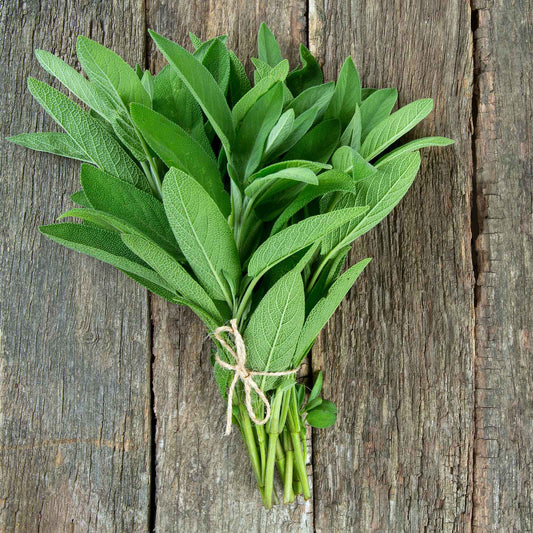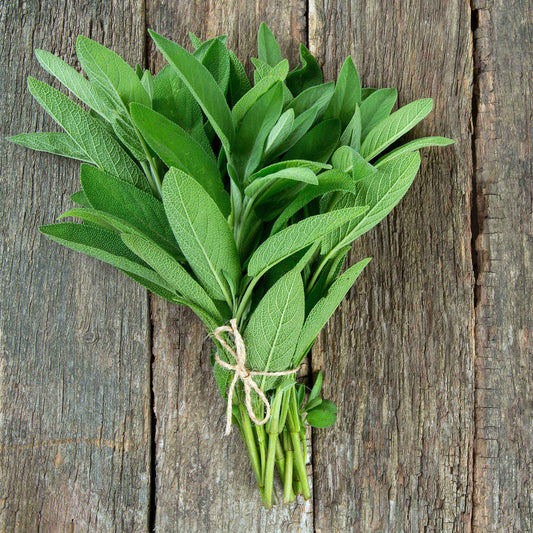-
main-collection-product-grid

Sage Seeds (Organic)
Commonly used to spice poultry, stuffing and sausagesSaleSage Seeds (Organic)
Commonly used to spice poultry, stuffing and sausagesRegular price As Low As $7.99Regular priceUnit price per$67.99Sale price As Low As $7.99Sale -
main-collection-product-grid

Sage Seeds
Versatile with a earthy and peppery flavor on broad leavesSage Seeds
Versatile with a earthy and peppery flavor on broad leavesRegular price As Low As $4.99Regular priceUnit price per
All about growing sage (broadleaf) seeds
- 2 broadleaf sage varieties
- Leaves and flowers are edible
- Extremely flavorful and versatile
- Can be planted in containers or even indoors
Sage is easy to grow and perfect for seasoning
Sage (broadleaf) seeds are one of the easiest and most satisfying perennial herbs to grow. Although it is native to the Mediterranean and north Africa, it has been somewhat naturalized and can be found growing wild in the coastal regions of the US. Also known as culinary sage, Salvia officinalis is the star seasoning of many fall dishes with both leaves and flowers that are edible. Sage seeds can be planted in the spring or fall and will overwinter in zones 5 through 8.
What to know about growing your own sage
Sage seeds can be sown directly into the garden after the risk of frost has passed. Direct seeding sage can be tricky because it may take up to six weeks to germinate in colder temperatures. Keeping soil moist during this time is key. Sage seeds can also be sown indoors six to eight weeks before the last frost. They take about three weeks to germinate and do best in consistently moist potting media with temperatures between 65 and 75°F. Sow seeds 1/8 inch below the surface of the soil and cover.
The best conditions for growing sage
Once sage plants have three sets of true leaves, pot them into lager containers. Harden off plants for a week before transplanting them into the garden. Sage does best in medium to full sun but also does well in containers or indoors if by a sunny window that gets at least six hours of good light per day. Outdoor sage plants grow into a round bush-like shape reaching one to two feet in height, bushing out as they get older. Space plants about 24 inches apart. These plants will reach full size within two to three years. Sage is relatively drought-tolerant, so long as it is given plenty of water during the establishment phase. Do not overwater sage. Like most plants native to the Mediterranean, care should be taken to water thoroughly but only when soil is almost completely dry.
Growing sage as an ornamental garden plant
Sage is easy to grow and is great not only for herb gardens but also as an attractive bush in ornamental spaces. It should be pruned back in early spring, cutting back woody stems to encourage fresh leaf growth for the upcoming season. Sage leaves can be taken as needed for cooking but can be harvested completely once or twice each growing season. When harvesting the entire plant, be sure to only cut about half of the height back so it can resume growing. Consider drying sage leaves in a warm, dark place with good airflow, either on a drying screen or hanging in a warm room away from sunlight. Sage leaves can be removed and crumbled into bags or jars to be given as gifts or used in recipes throughout the winter.
For more information about planting, growing, and caring for sage seeds, see the Sage (Broadleaf) Seeds Planting Guide.

